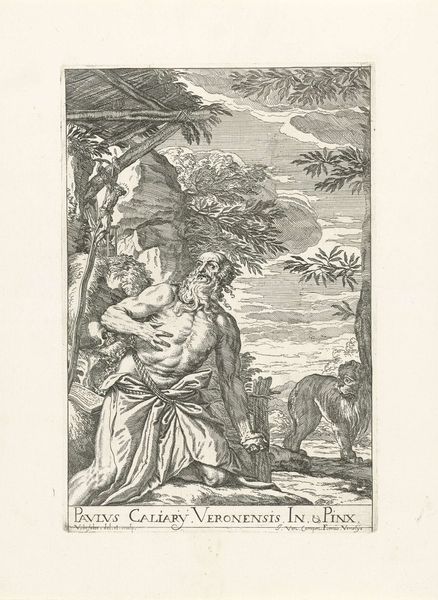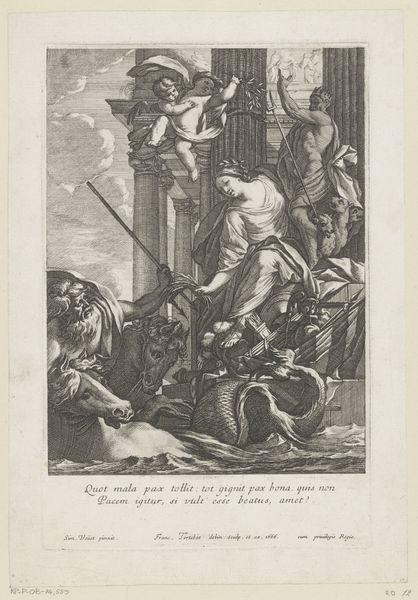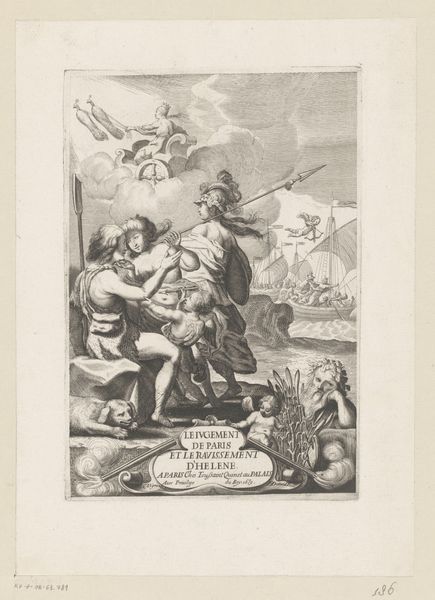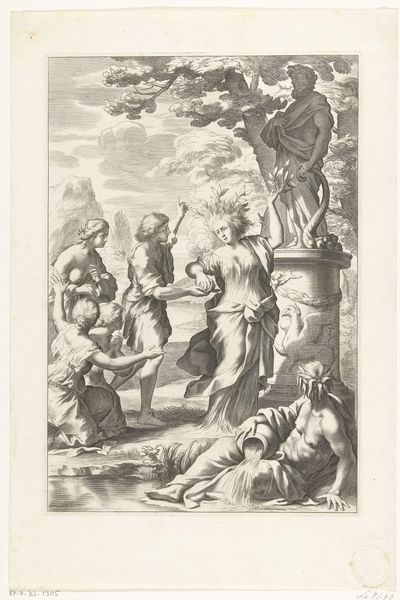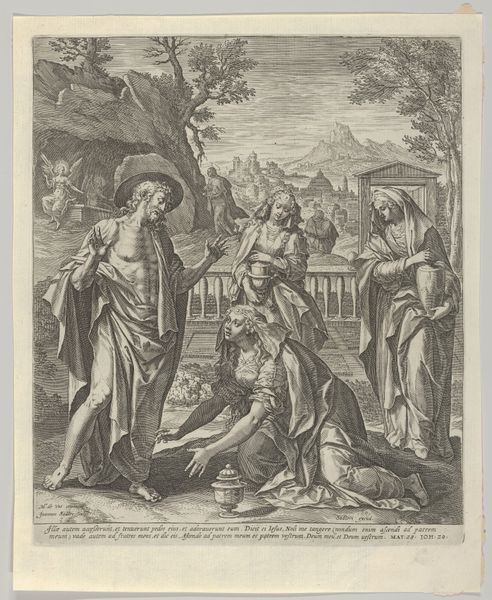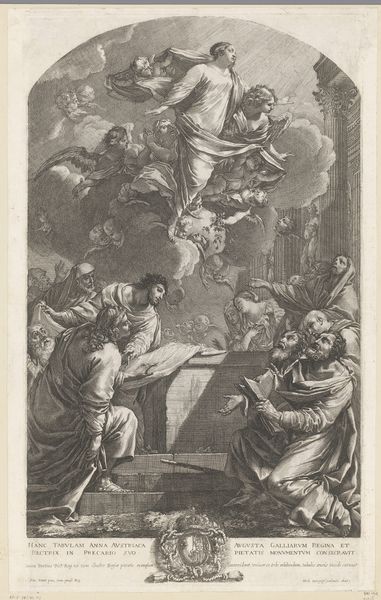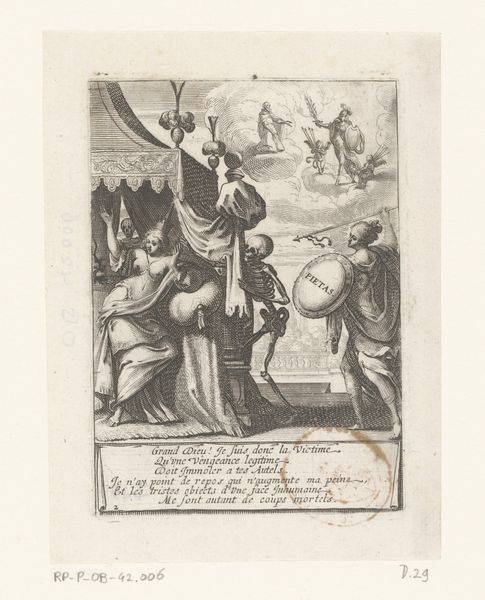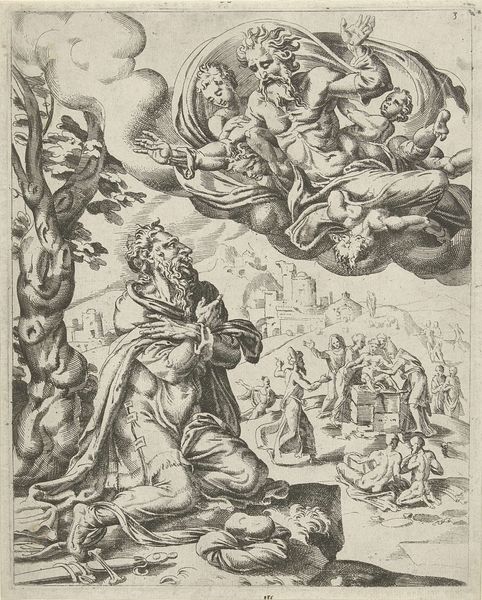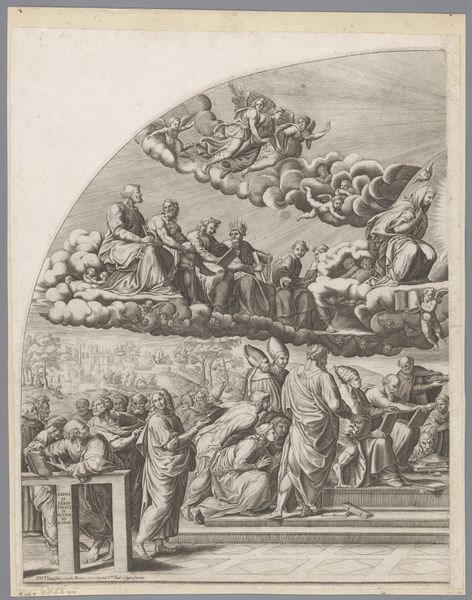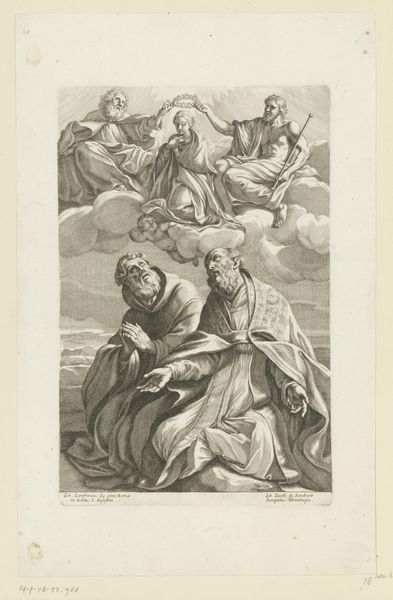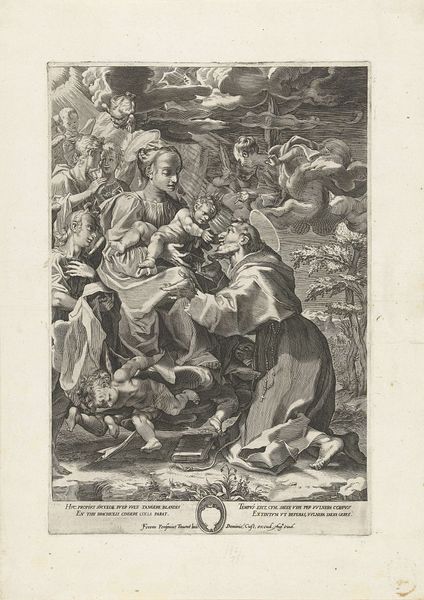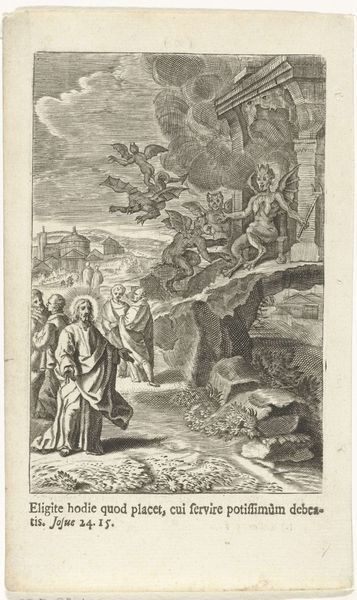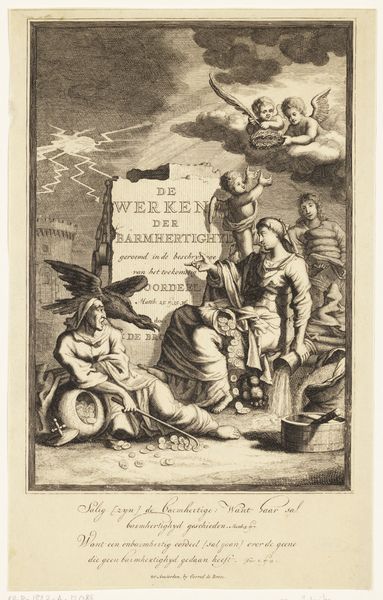
Maria met Kind aanbeden door de heiligen Thomas en Cecilia 1613 - 1627
0:00
0:00
raffaelloschiaminossi
Rijksmuseum
print, engraving
#
baroque
# print
#
old engraving style
#
figuration
#
history-painting
#
engraving
Dimensions: height 390 mm, width 273 mm
Copyright: Rijks Museum: Open Domain
Curator: The mood strikes me first: devotional, reverent. It's intense, though mostly black and white! Editor: Well, let’s delve in! This is an engraving titled "Maria met Kind aanbeden door de heiligen Thomas en Cecilia," made sometime between 1613 and 1627. The artist was Raffaello Schiaminossi. We find this work in the Rijksmuseum collection. And yes, the starkness of the black and white contributes to its intense spiritual feel. Curator: Definitely. There's something so pure, you know? Like an urgent prayer. Is that what it suggests to you? Editor: The composition immediately draws attention to power dynamics. Mary and the Christ child are elevated amidst the clouds, quite literally sitting on a pedestal, a symbolic affirmation of their supreme role. Look how Saints Thomas and Cecilia kneel below in supplication. Notice the symbolic artifacts associated with each saint, a visual device typical for Baroque engravings? Curator: True, those keys held by Saint Thomas—Saint Peter, really—they carry so much meaning, promising entry to paradise. But it is Mary’s gaze, almost wistful that gets to me every time I view this engraving. It’s not the confident serenity you see in, say, a Raphael Madonna. Editor: And that gets to the very heart of its cultural significance. Schiaminossi captures the rising fervor of the Baroque period and Counter-Reformation in Northern Europe. The emphasis on powerful emotional engagement through familiar subjects, it reflects the political project of reaffirming spiritual faith against reformist ideals. Curator: Precisely, it shows how powerful emotion and skillful presentation can create connection. The play of dark and light is very expressive; it moves us. Editor: It really captures the theatricality that marks the style. The devotion in this print acts as both an invitation to connect with Mary and an assertion of existing institutional powers. Curator: It has a kind of tender defiance to it. I suppose, in the end, like any powerful art it creates the feeling and reveals the deeper meanings and feelings later on, for us! Editor: Exactly. This work invites us to explore those tensions. We might reflect on how that plays out still today, on who gets to wield such artistic and institutional power.
Comments
No comments
Be the first to comment and join the conversation on the ultimate creative platform.
